Deep beneath the rolling tuff landscapes of Cappadocia lies one of the region’s most extraordinary achievements of engineering and resilience—Derinkuyu Underground City. Carved into the soft volcanic rock, this multi-level city stretches an impressive 85 meters below the surface, making it the deepest excavated underground city in Turkey. Thought to have been originally started by the Phrygians around the 8th–7th centuries BCE and later expanded by Byzantine Christians, Derinkuyu served as both a home and a fortress, sheltering thousands of people during times of invasion.
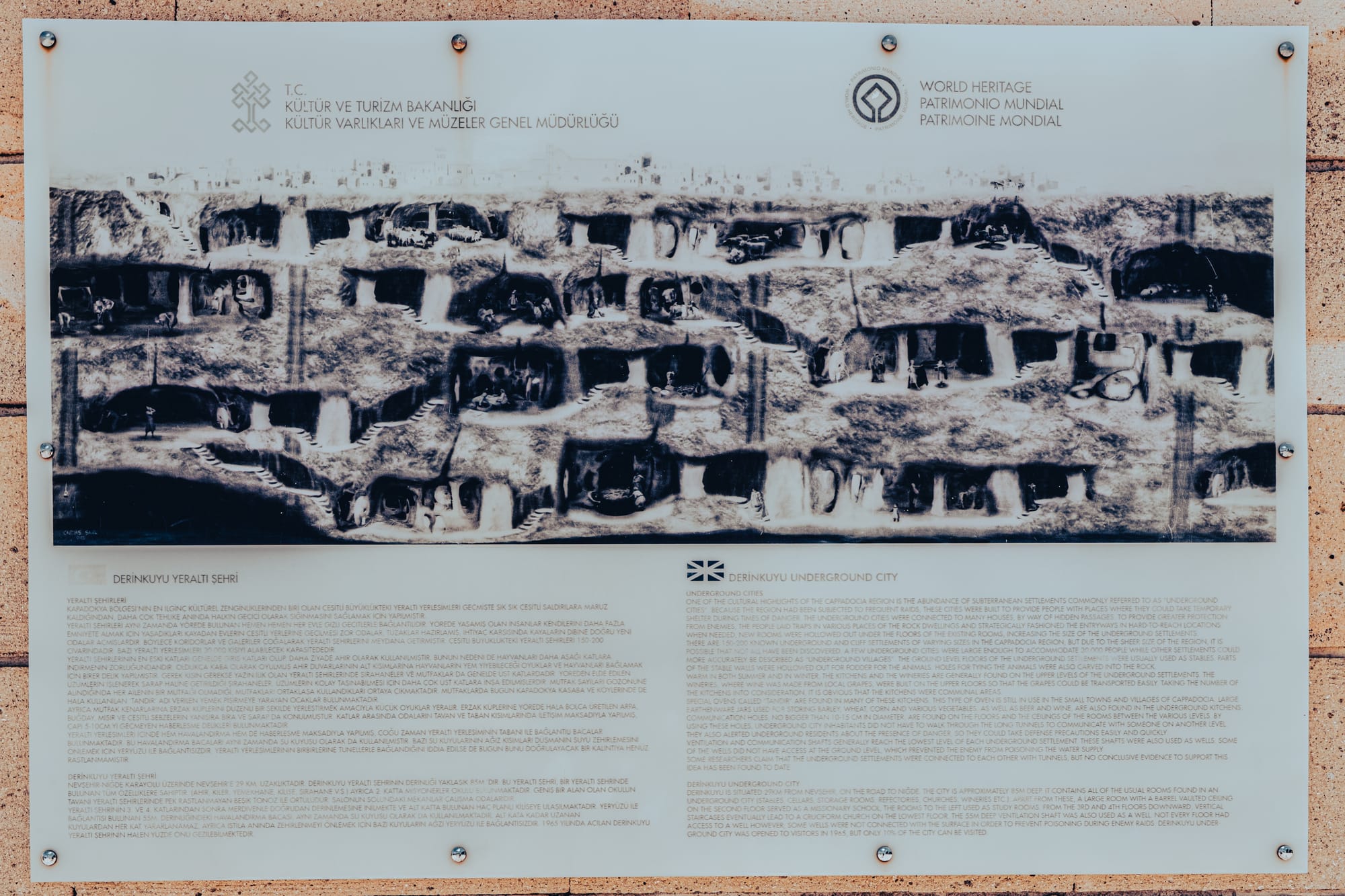
Today, it’s one of the most popular stops on the Cappadocia Green Tour, which also includes Ihlara Valley, Selime Monastery, and the Pigeon Valley Lookout. Booking the Green Tour is by far the easiest way to see Derinkuyu, as it includes transportation, a guide, and other top highlights.
A city built to disappear
Derinkuyu’s brilliance lies in its ability to blend invisibly into the landscape. From the surface, there’s nothing to suggest the vast network of tunnels, chambers, and ventilation shafts that lie beneath your feet. The city was intentionally designed this way to remain hidden from invading forces. Its only openings to the outside world were cleverly disguised ventilation chimneys that looked like simple wells or rock formations.
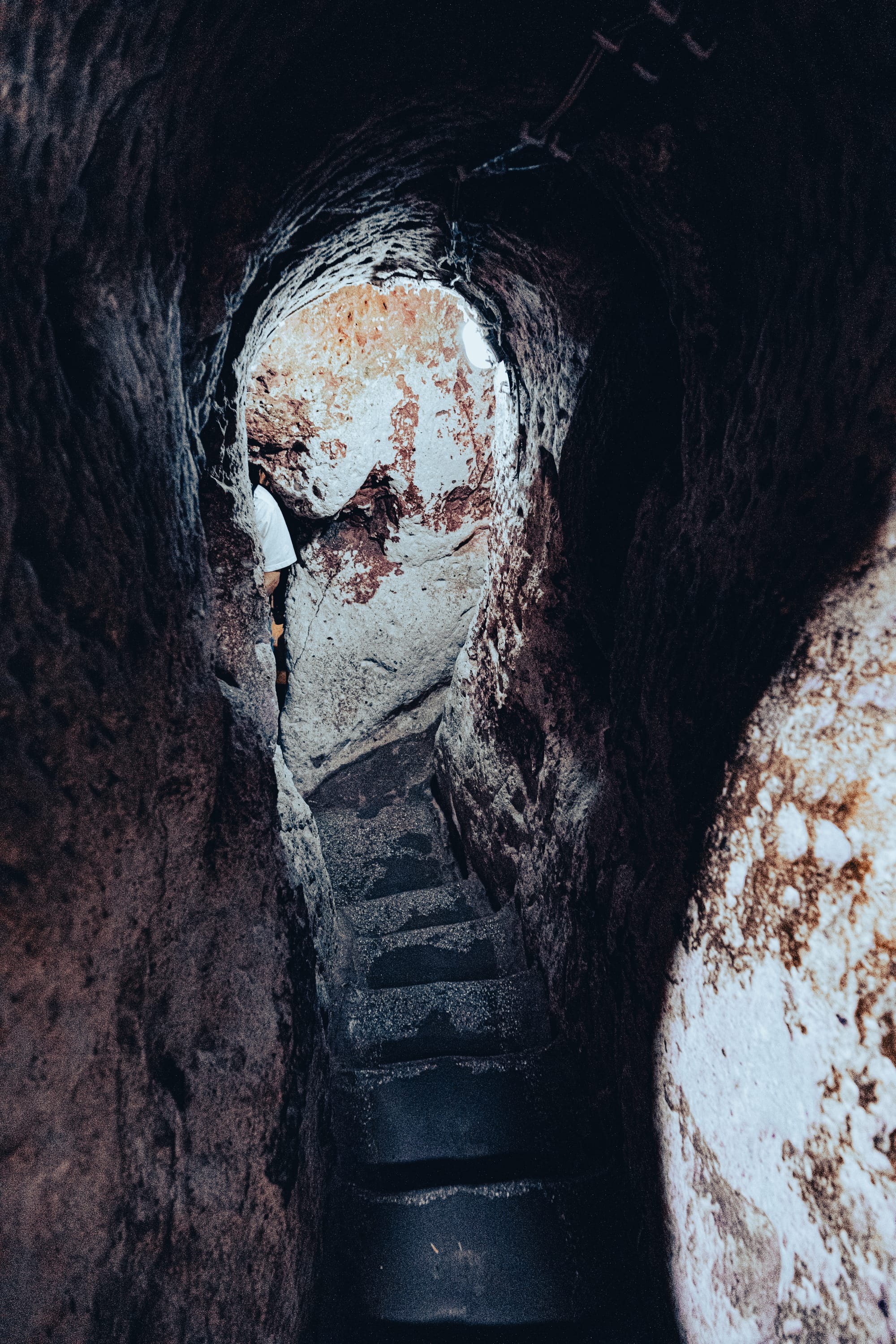
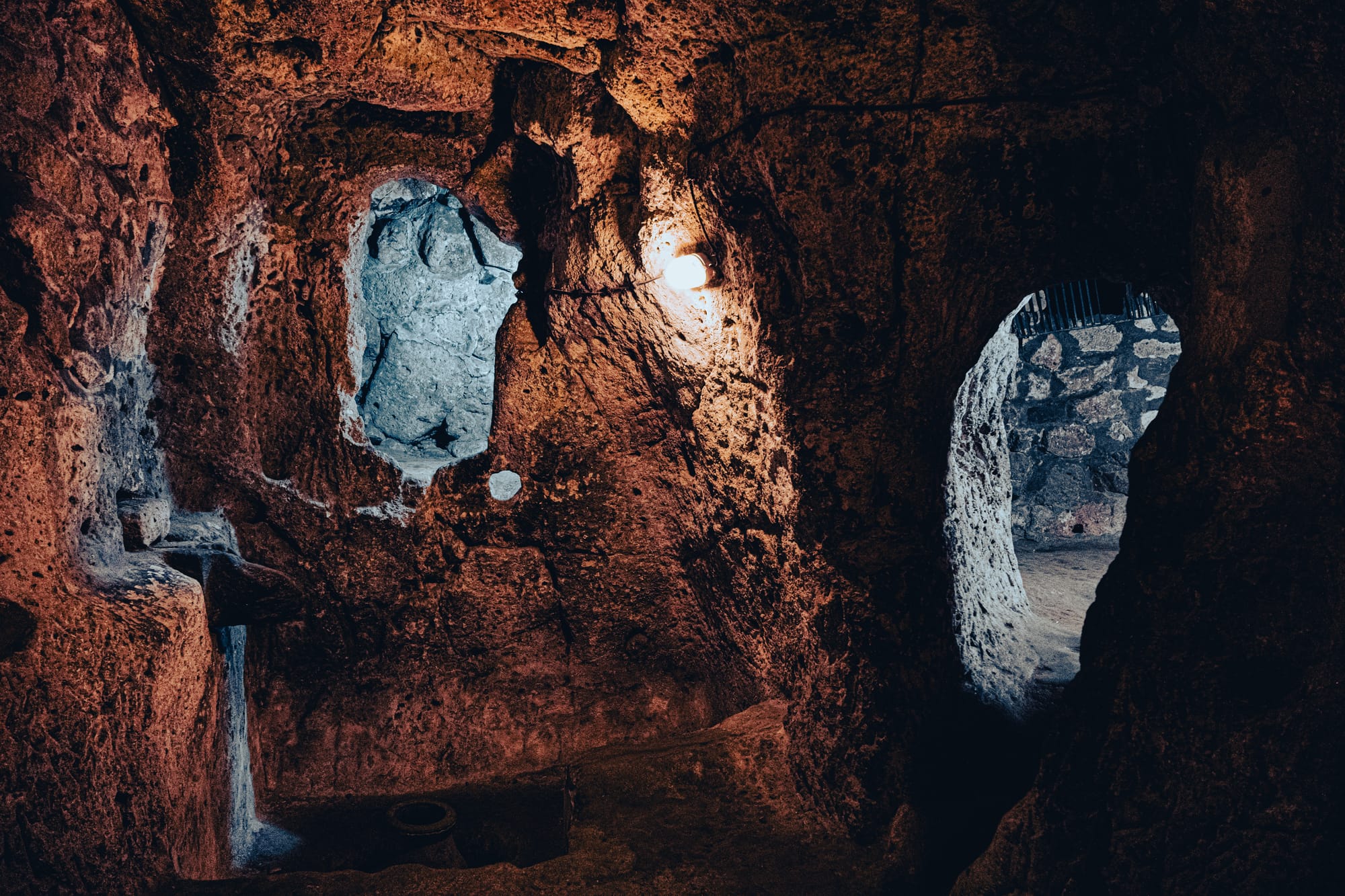
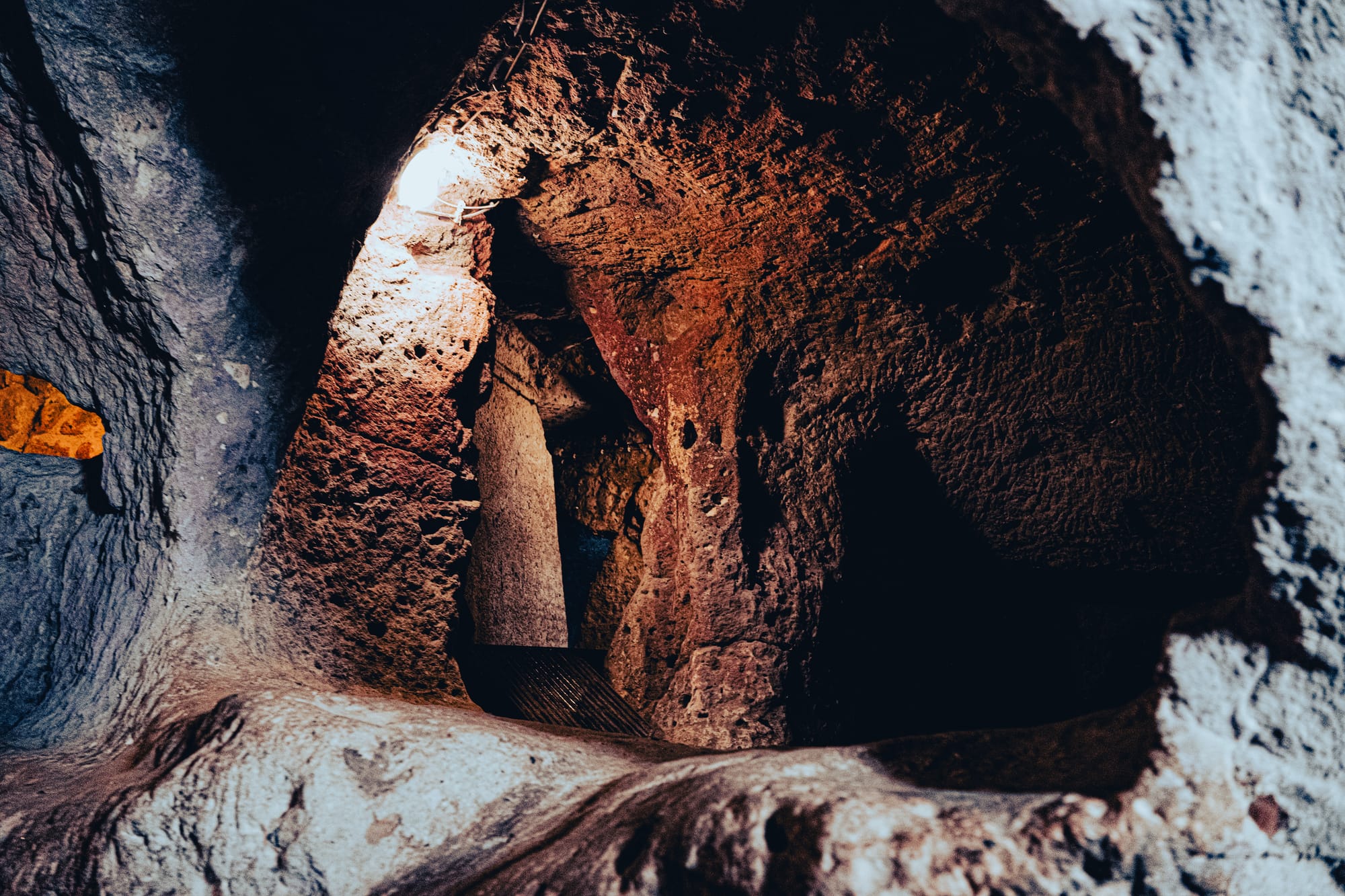
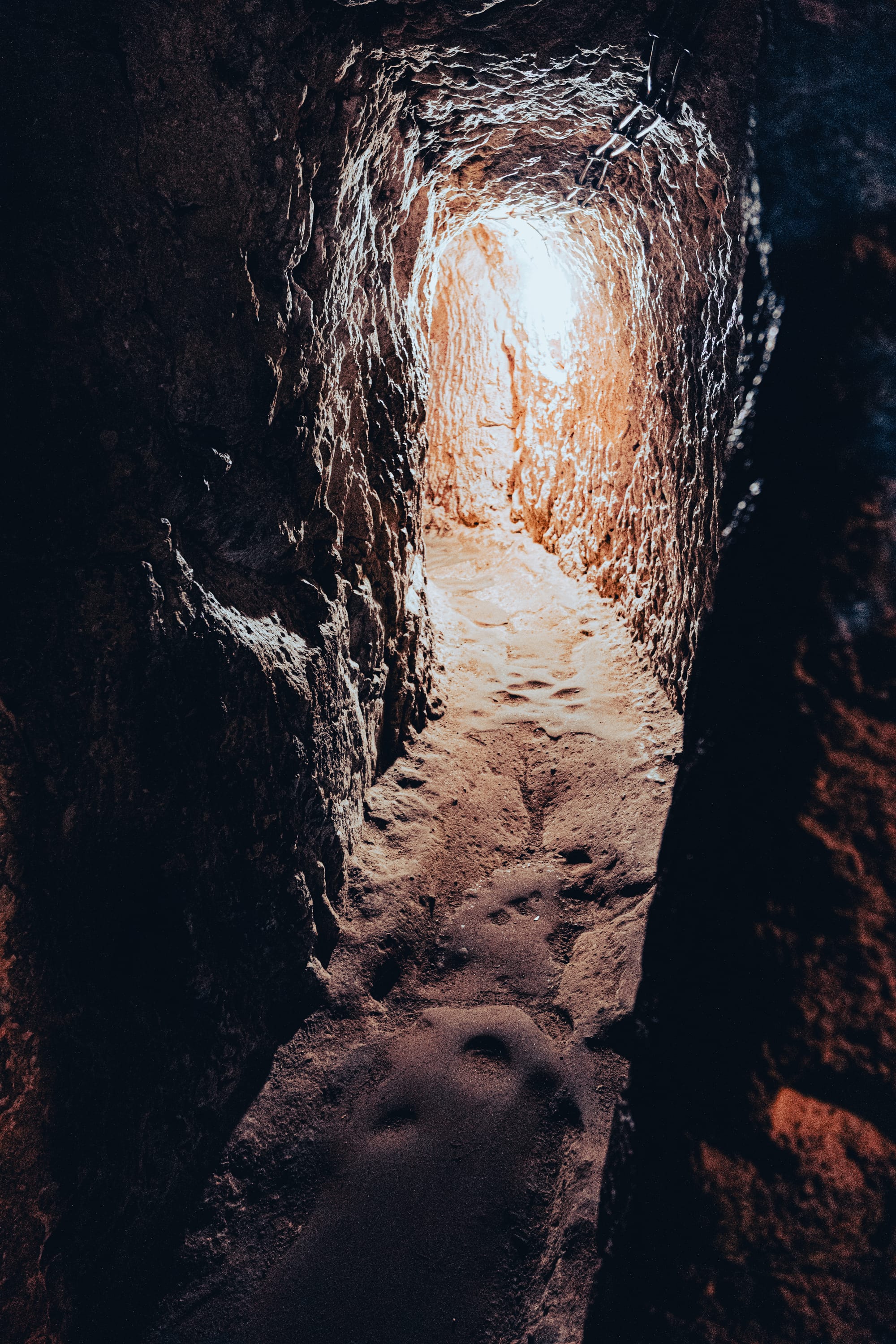
Exploring narrow tunnels, carved chambers, and hidden passageways deep inside Derinkuyu Underground City
The city is organized across multiple levels connected by narrow passageways, with specific areas designated for living quarters, kitchens, wine and oil presses, stables, religious spaces, storage rooms, and even schools. Large circular stone doors could be rolled into place to seal off sections, trapping enemies or isolating parts of the city in case of an attack.
Historical context and purpose
While early construction may date back to the Phrygian period, much of what remains today reflects Byzantine-era modifications. During the Arab–Byzantine wars (7th–11th centuries), Derinkuyu and other underground cities in Cappadocia offered safe refuge for Christian communities. These subterranean settlements were used intermittently over centuries, particularly during waves of invasion or persecution.
The city’s design reveals not just defensive priorities but also sophisticated planning for extended habitation. With the capacity to hold up to 20,000 people and their livestock, Derinkuyu contained dedicated areas for food storage, animal care, and religious practice. The ventilation system, still functional today, could keep the air fresh even in the deepest levels, while water wells ensured a steady supply that could not be easily contaminated from above.
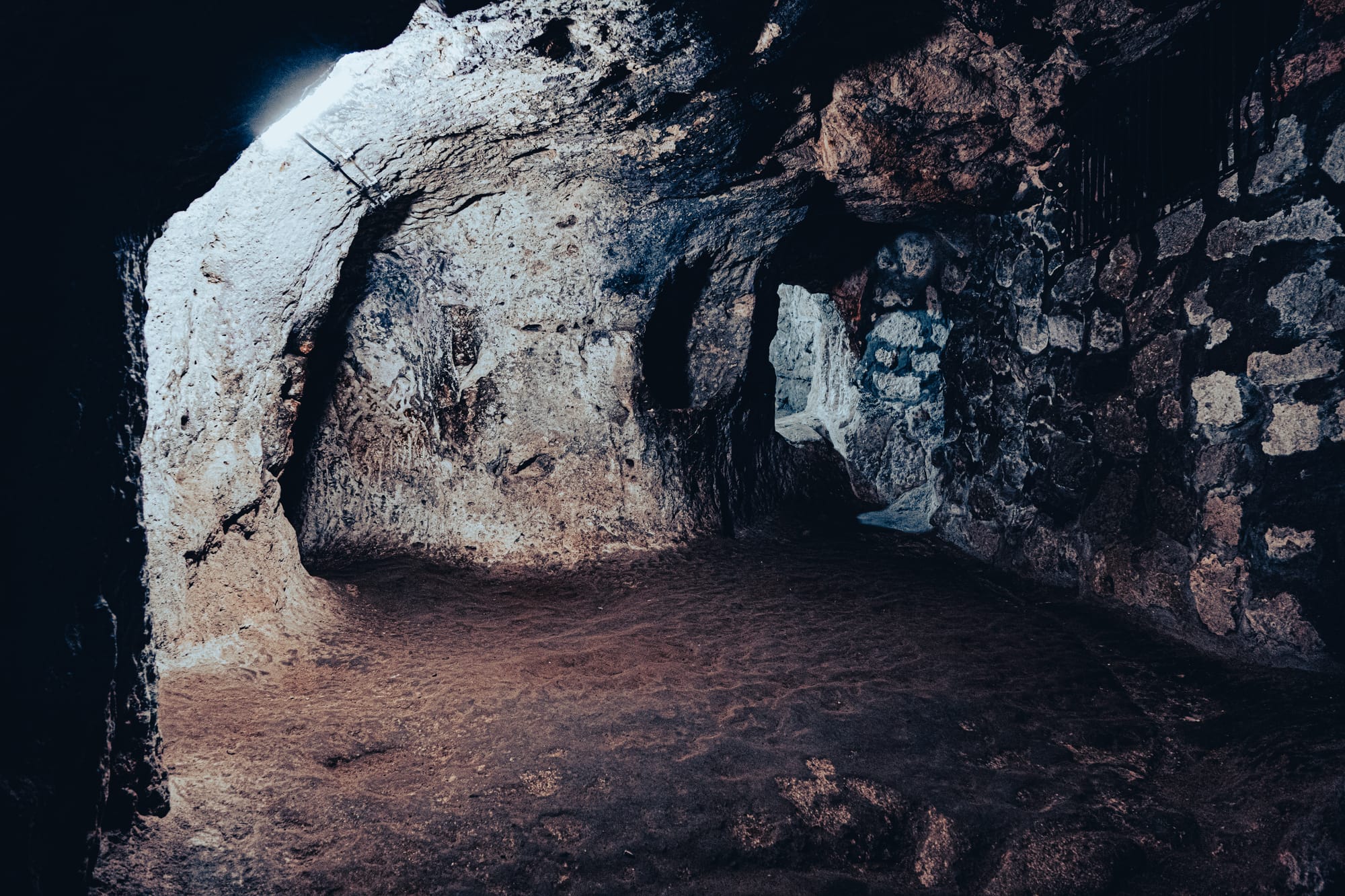
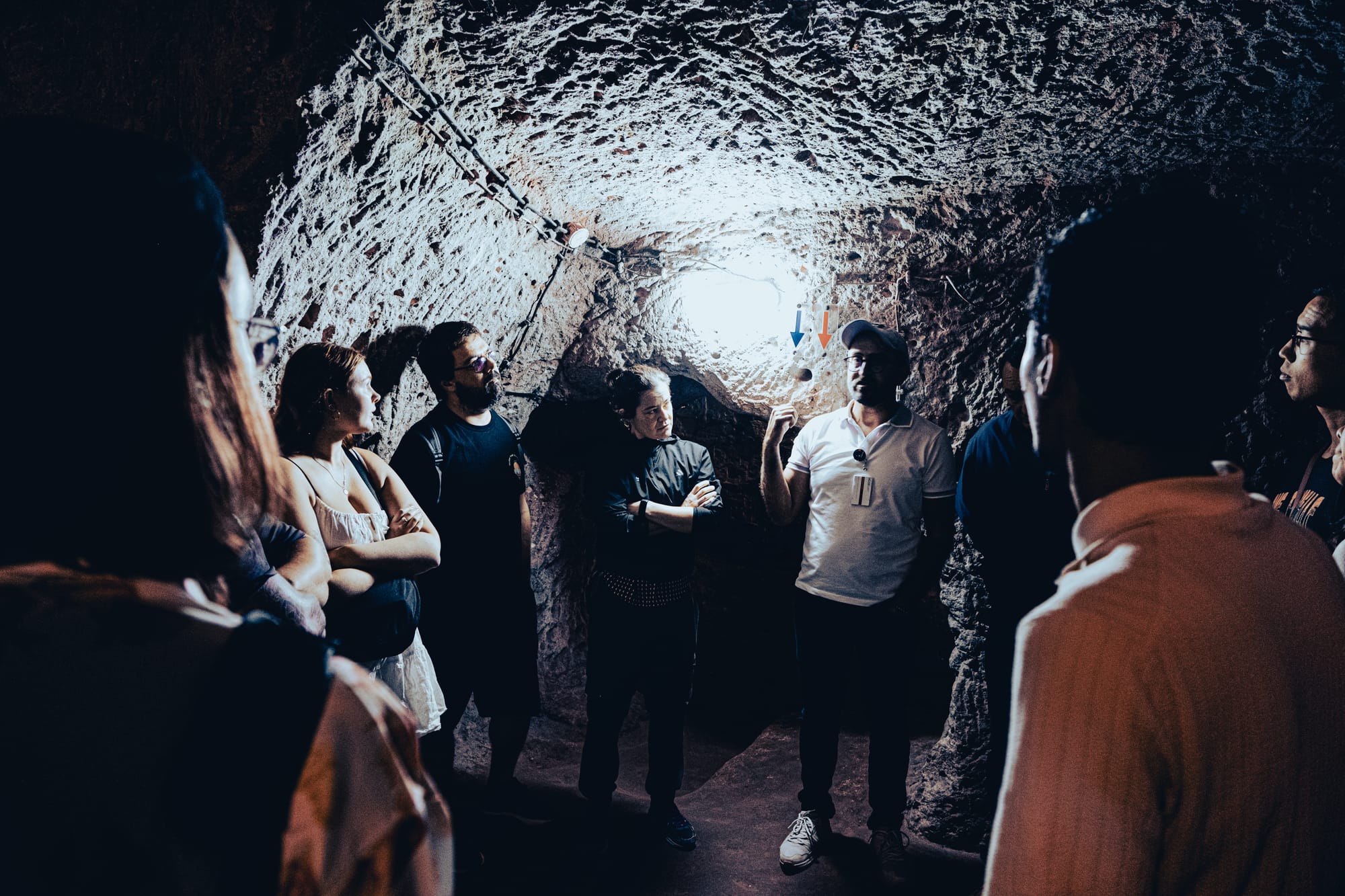
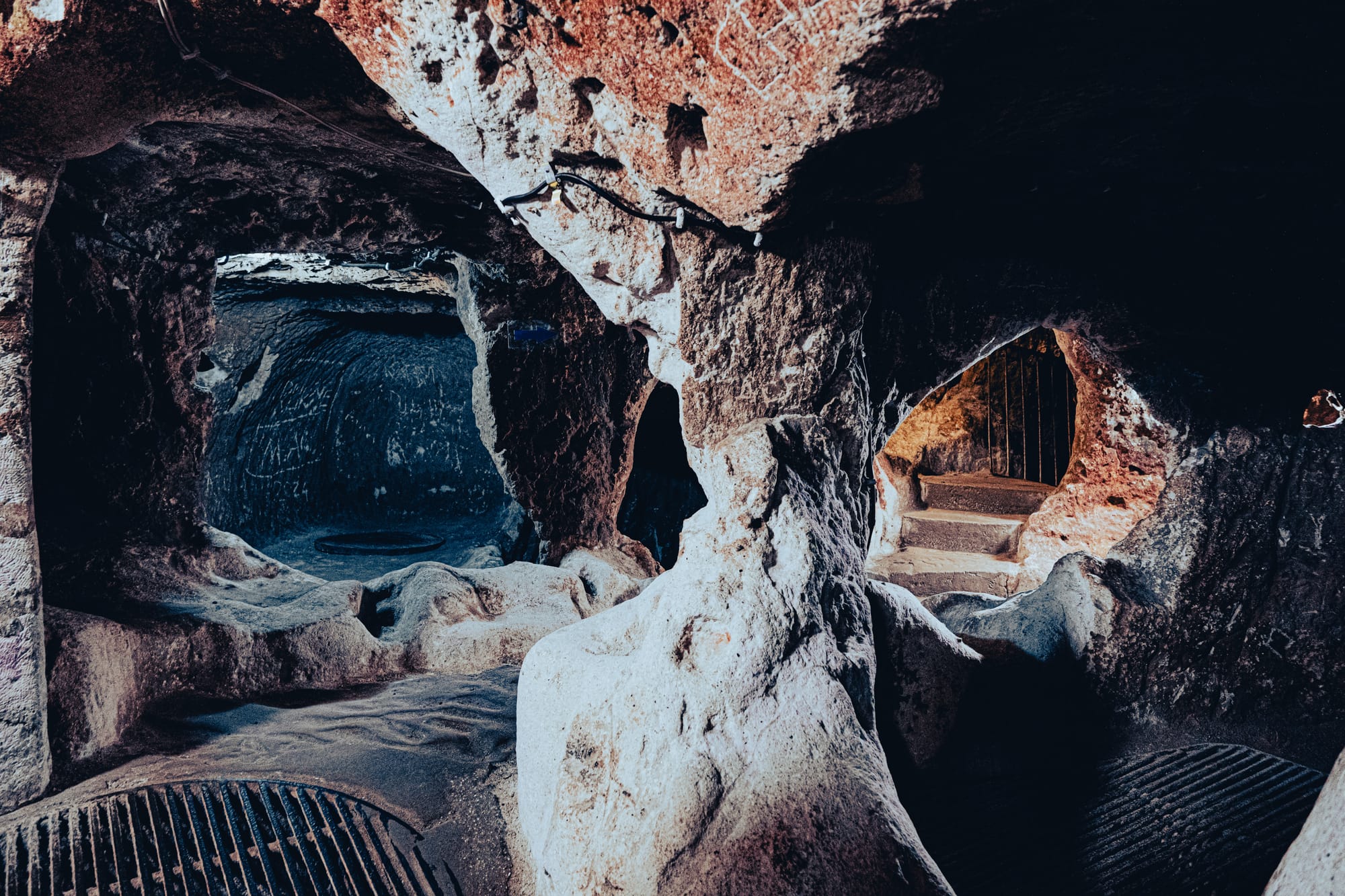
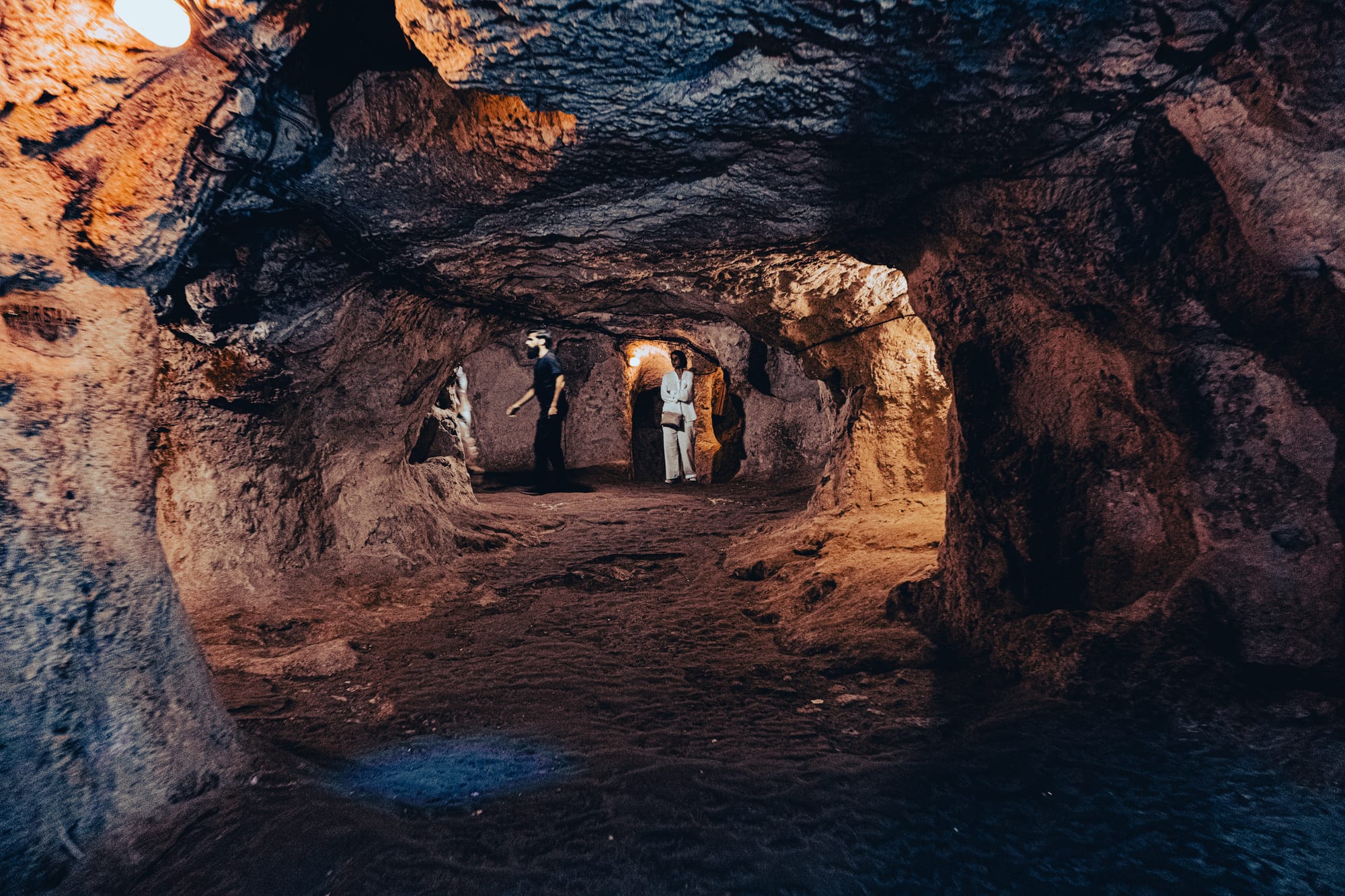
Vast chambers and guided tours reveal the impressive scale of Derinkuyu Underground City
Its use spanned centuries, from the Byzantine period through the Ottoman era, with locals retreating underground in response to conflict, raids, or harsh winters. This longevity shows how Derinkuyu was more than an emergency hideout—it was an integral part of life in Cappadocia.
Daily life beneath the earth
Life underground was a masterclass in adaptability. Families lived in small, interconnected rooms with niches carved into the walls for storage and sleeping. Communal kitchens featured blackened ceilings from centuries of cooking fires, with smoke cleverly vented through disguised chimneys. Livestock were kept in designated stables near the upper levels to reduce the transport of waste and to protect the food supply.
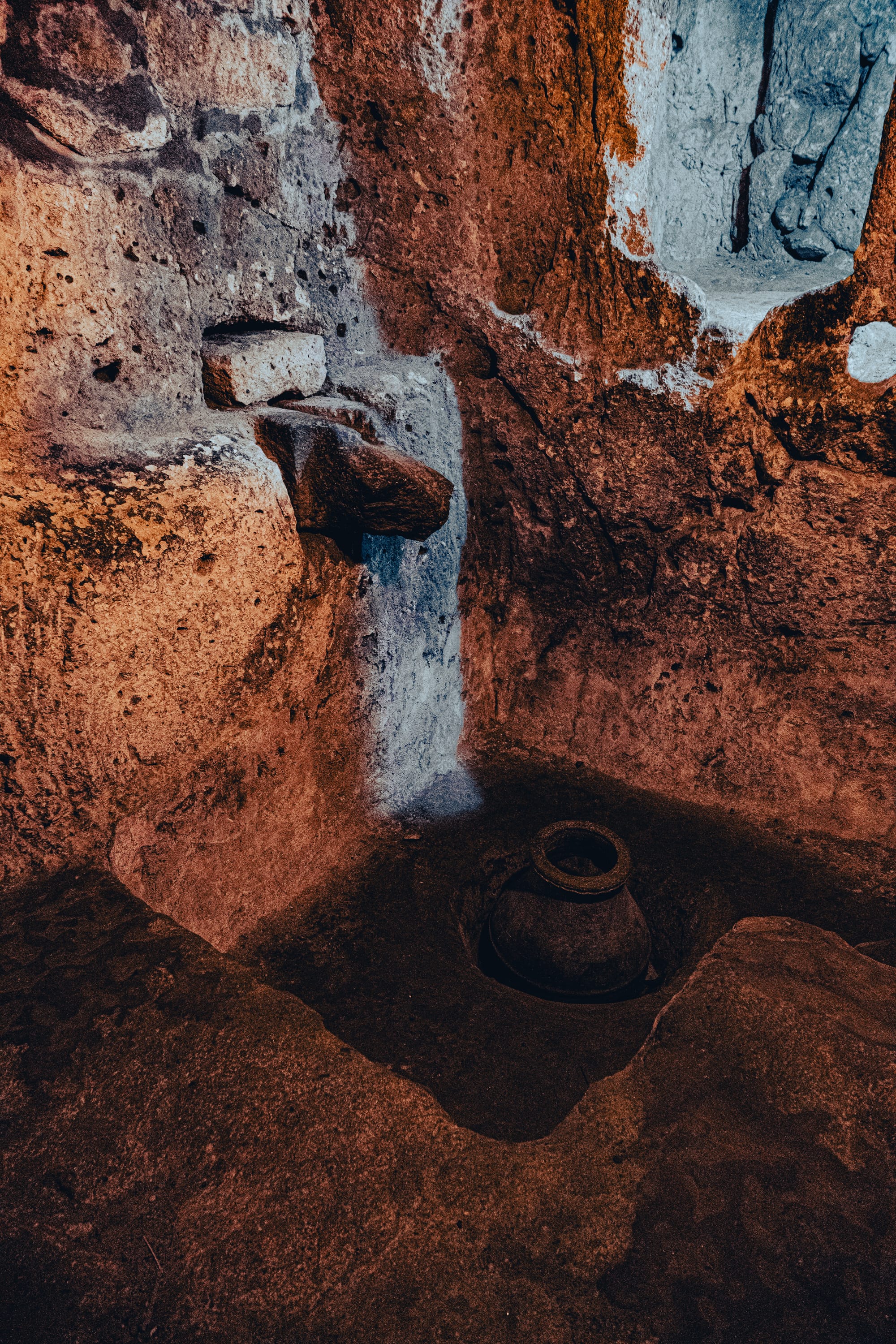
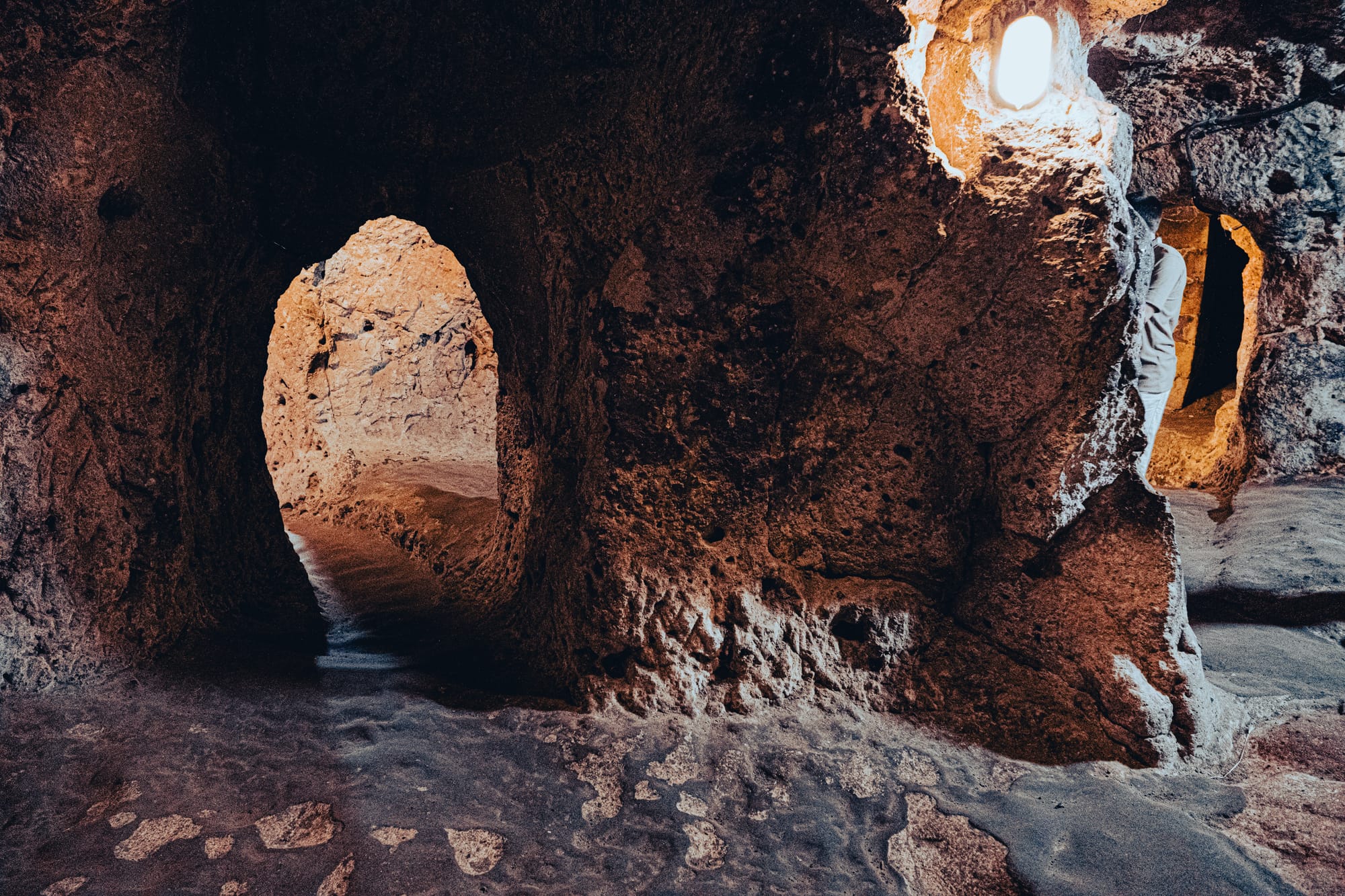
Ancient stone structures and carved pathways showcasing Derinkuyu’s functional underground architecture
Wine presses and oil presses carved directly into the rock speak to the community’s agricultural base. Storage rooms were strategically located to keep provisions cool and protected. Narrow staircases and steep slopes connected the levels, while communication between sections could be maintained through small carved openings.
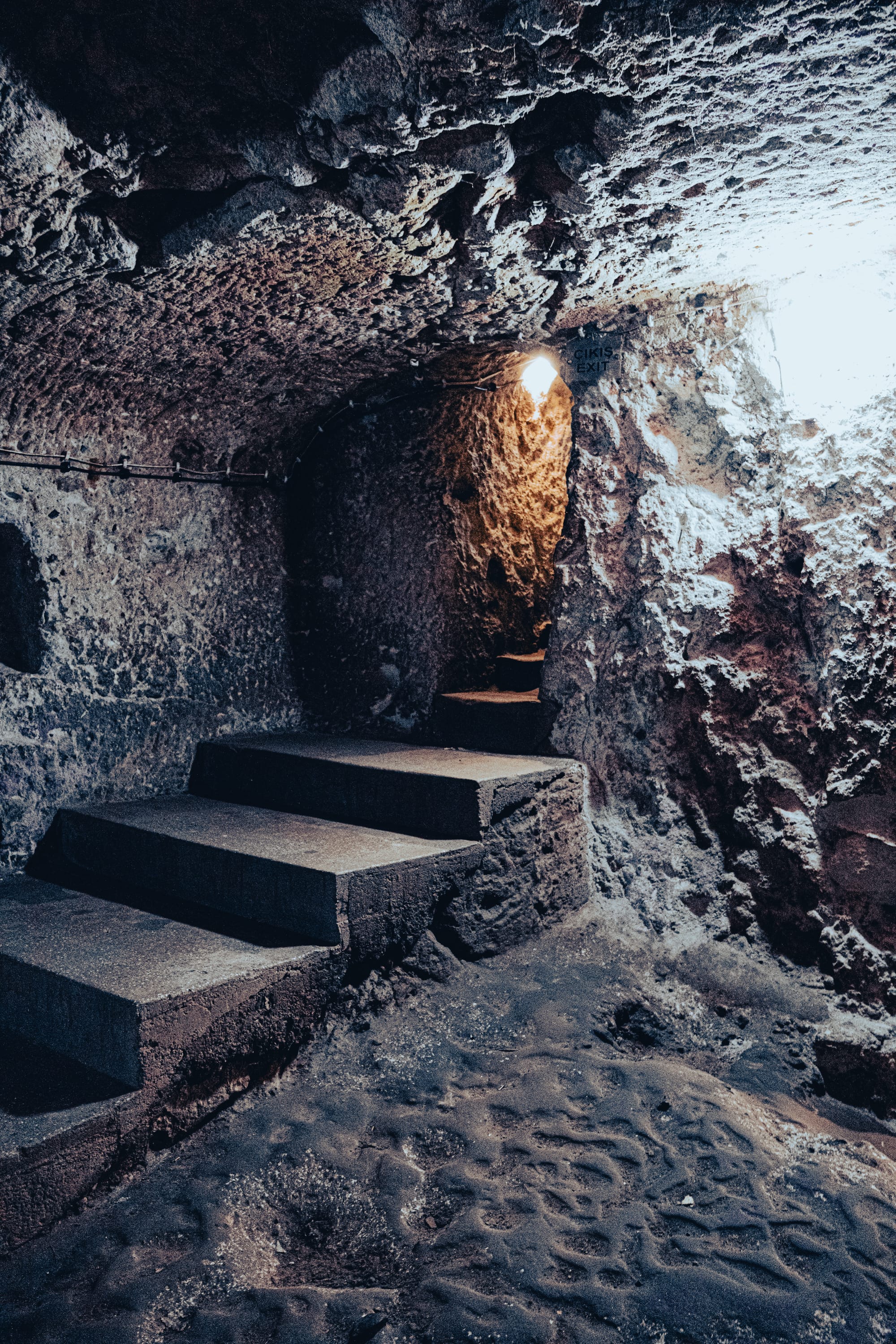
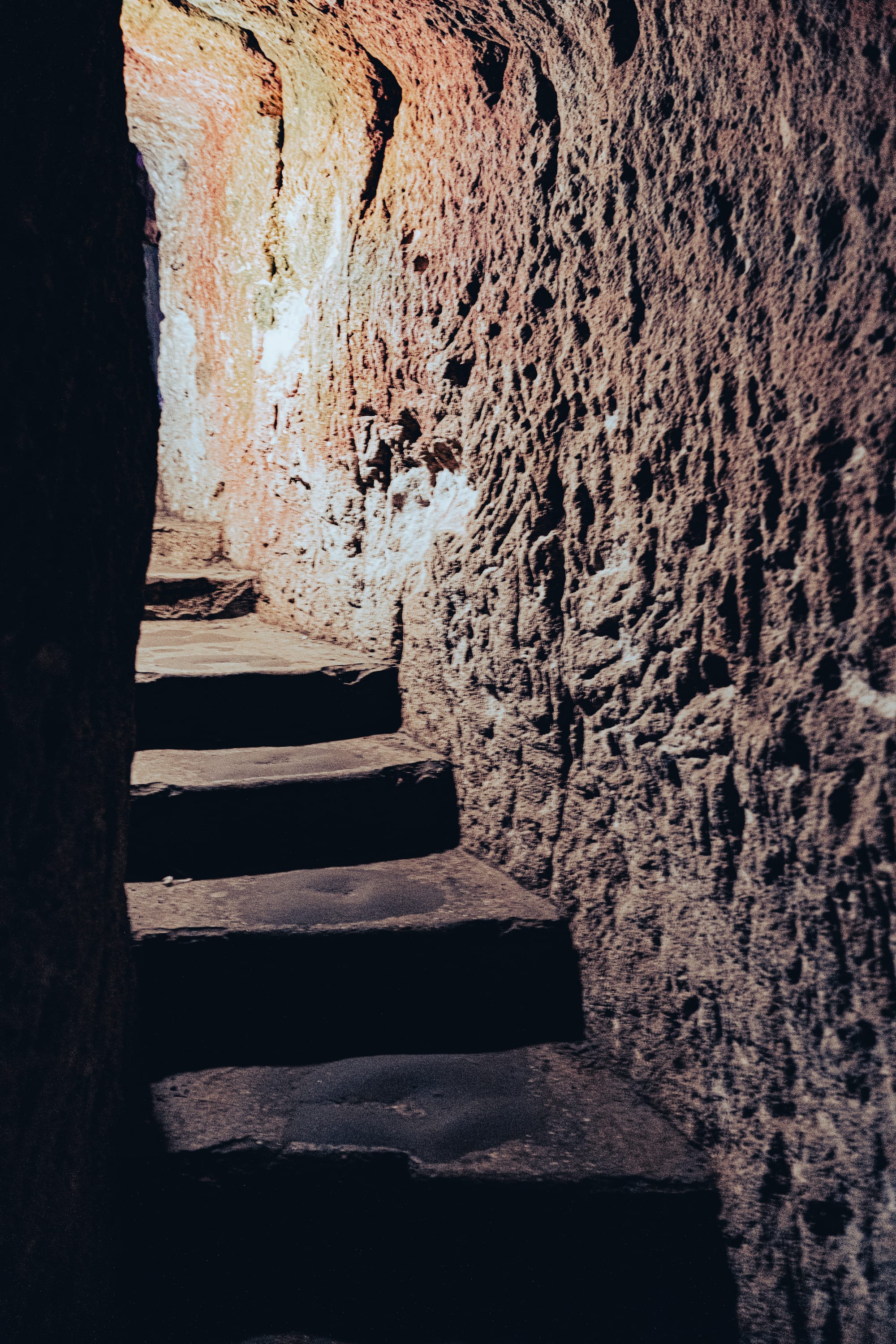
Stone stairways leading deeper into the winding tunnels of Derinkuyu
Religious life was also part of the underground rhythm. Chapels and churches with altars, apses, and crosses carved into the stone served as places for worship and community gatherings. Schools, too, existed underground—essential for maintaining education during long periods of concealment.
Defensive ingenuity
Derinkuyu’s defense systems were as ingenious as they were practical. The famous circular stone doors, sometimes weighing up to 500 kilograms, could be rolled into place by a single person from the inside. These stones blocked narrow passageways completely, leaving no room for an enemy to push past.
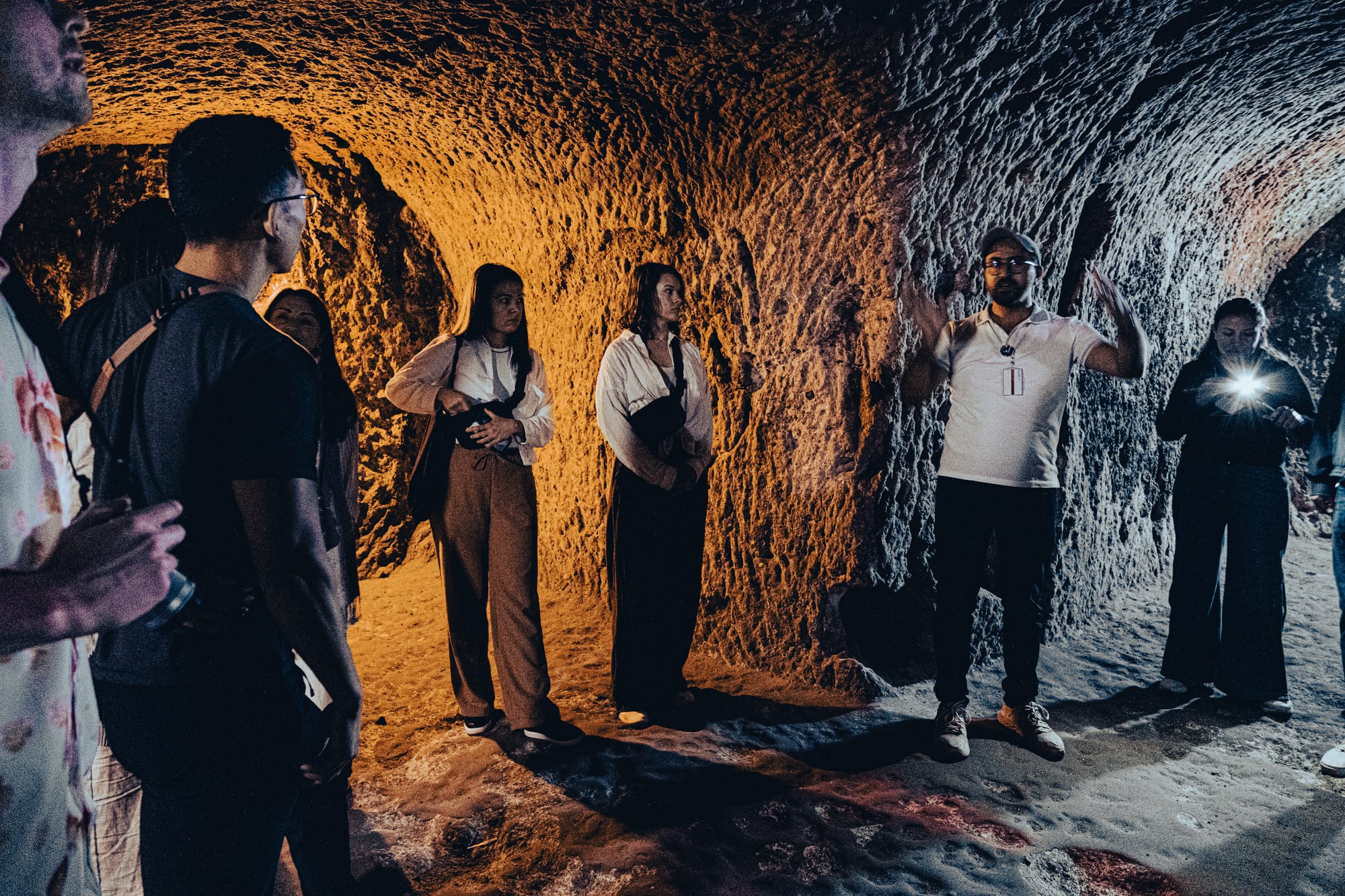
Additionally, the city’s narrow tunnels were deliberately designed to slow and control the movement of intruders—often allowing only one person to pass at a time. Some passages feature small holes in the ceiling, believed to have been used for spears or other defensive measures against advancing attackers.
Comparing Derinkuyu to Özkonak
While Özkonak Underground City shares many similarities, Derinkuyu feels noticeably deeper and more extensive in its vertical reach. Özkonak is famous for its communication tunnels and smaller-scale layout, while Derinkuyu impresses visitors with its vast depth and multi-level complexity. If you plan to visit both, it’s worth reading our full guide to Özkonak Underground City to better understand how each site reflects variations in Cappadocia’s underground architecture.
Visitor experience and claustrophobia warning
Exploring Derinkuyu is an unforgettable adventure, but it’s not for everyone. The tunnels are extremely narrow—often only wide enough for one person to pass in one direction—and can be steep. At its deepest points, the sense of enclosure is significant. Visitors with claustrophobia may find the experience overwhelming and should consider skipping this stop.
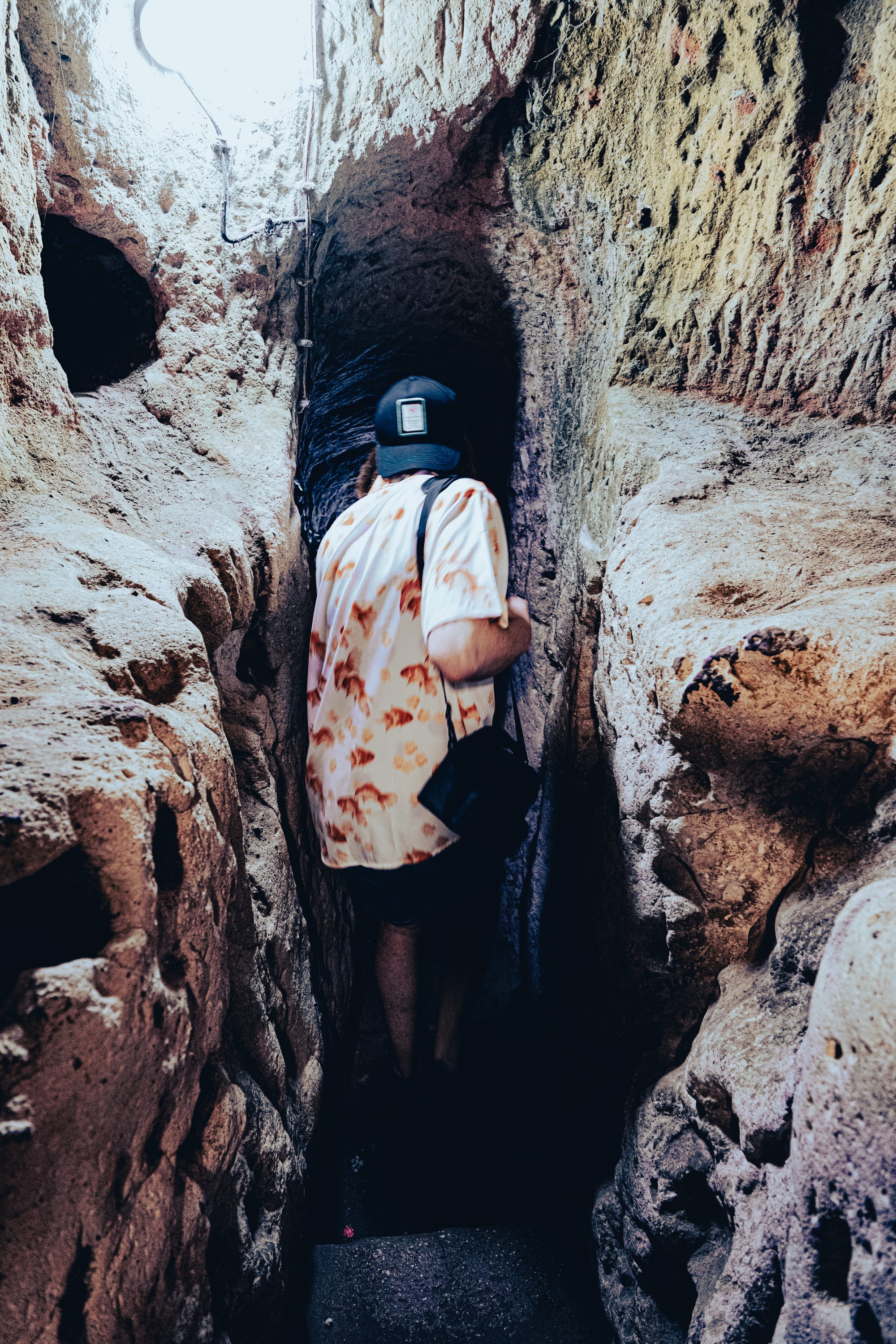
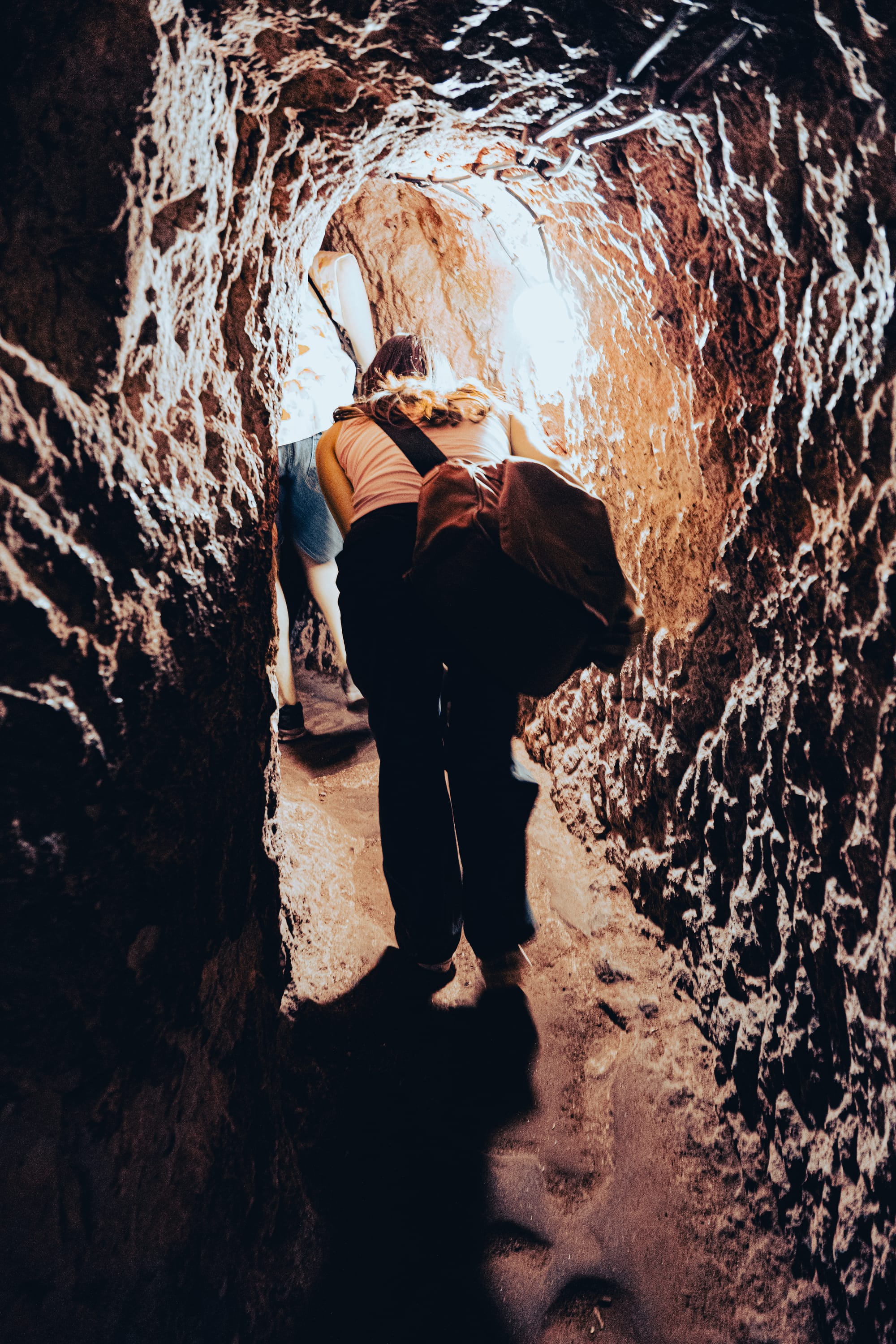
Visitors navigate the narrow, winding passageways deep inside Derinkuyu Underground City
Additionally, because of the depth and physical effort involved, some people may feel short of breath, especially on the climb back to the surface. While most healthy visitors will be fine, it’s best to take your time and use the handrails where provided.
Why Derinkuyu remains a Cappadocia essential
Derinkuyu Underground City's labyrinthine layout, complete with ventilation shafts, living spaces, religious sites, and defensive structures, tells the story of a people who literally built their lives into the earth to survive.
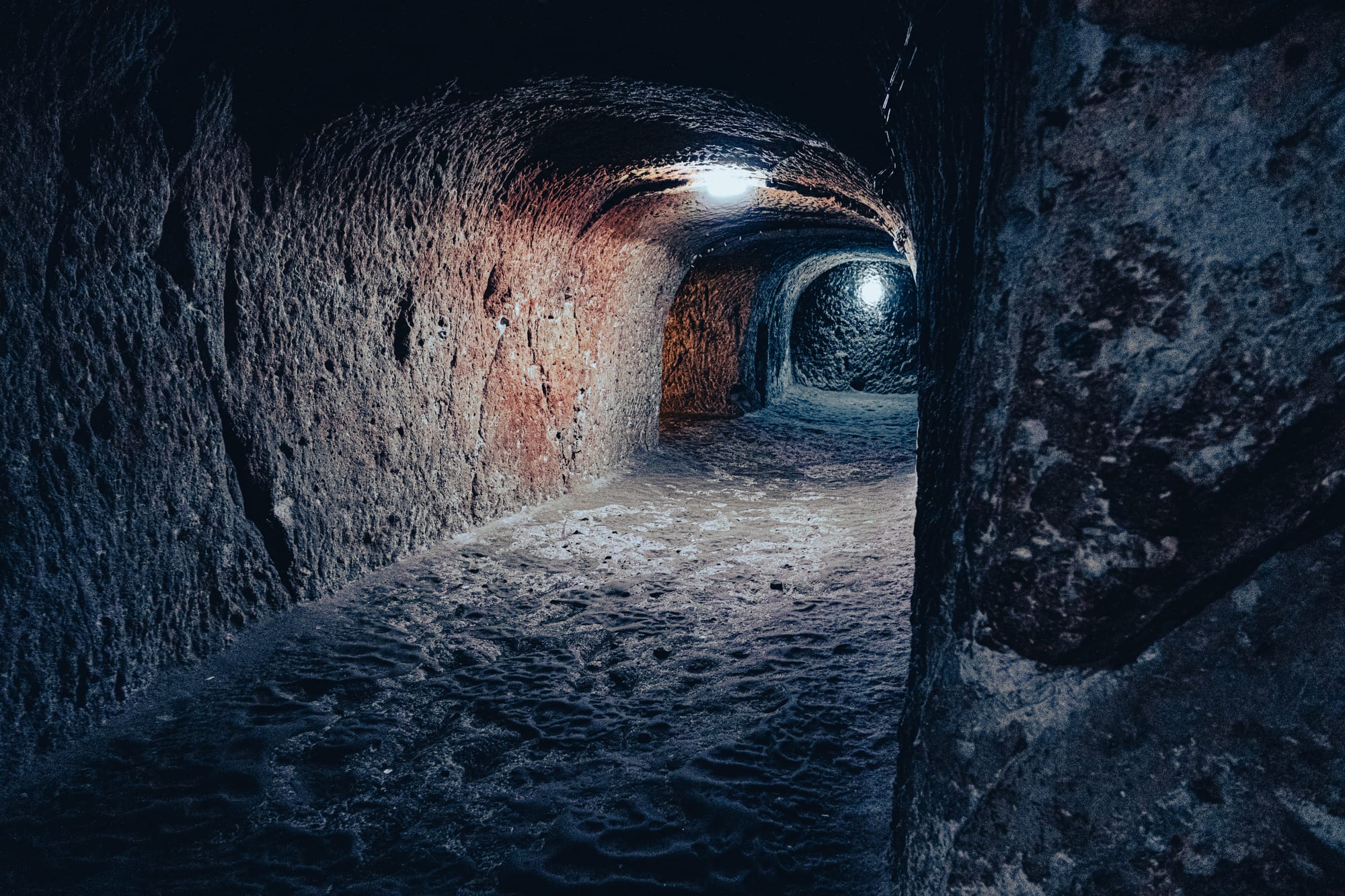
For travelers eager to step into Cappadocia’s hidden world, Derinkuyu offers one of the most immersive experiences in the region. If you're looking to go, we highly recommend the same Cappadocia Green Tour we did, which stopped at Derinkuyu along with some other fascinating sites.






